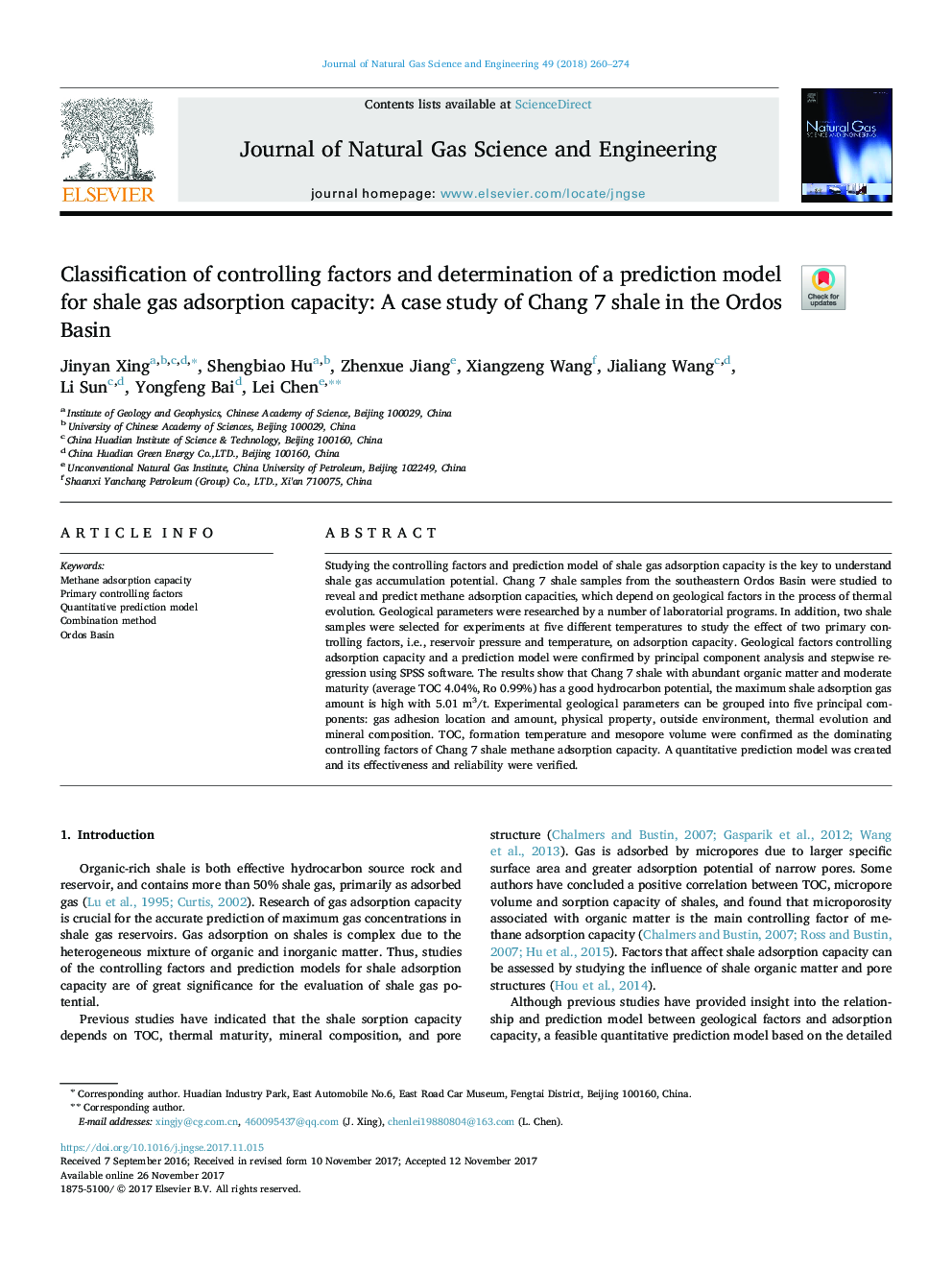| Article ID | Journal | Published Year | Pages | File Type |
|---|---|---|---|---|
| 8128510 | Journal of Natural Gas Science and Engineering | 2018 | 15 Pages |
Abstract
Studying the controlling factors and prediction model of shale gas adsorption capacity is the key to understand shale gas accumulation potential. Chang 7 shale samples from the southeastern Ordos Basin were studied to reveal and predict methane adsorption capacities, which depend on geological factors in the process of thermal evolution. Geological parameters were researched by a number of laboratorial programs. In addition, two shale samples were selected for experiments at five different temperatures to study the effect of two primary controlling factors, i.e., reservoir pressure and temperature, on adsorption capacity. Geological factors controlling adsorption capacity and a prediction model were confirmed by principal component analysis and stepwise regression using SPSS software. The results show that Chang 7 shale with abundant organic matter and moderate maturity (average TOC 4.04%, Ro 0.99%) has a good hydrocarbon potential, the maximum shale adsorption gas amount is high with 5.01Â m3/t. Experimental geological parameters can be grouped into five principal components: gas adhesion location and amount, physical property, outside environment, thermal evolution and mineral composition. TOC, formation temperature and mesopore volume were confirmed as the dominating controlling factors of Chang 7 shale methane adsorption capacity. A quantitative prediction model was created and its effectiveness and reliability were verified.
Related Topics
Physical Sciences and Engineering
Earth and Planetary Sciences
Earth and Planetary Sciences (General)
Authors
Jinyan Xing, Shengbiao Hu, Zhenxue Jiang, Xiangzeng Wang, Jialiang Wang, Li Sun, Yongfeng Bai, Lei Chen,
